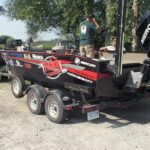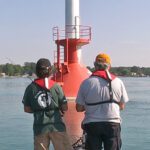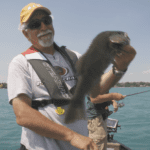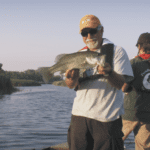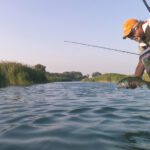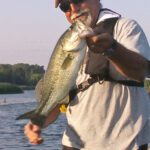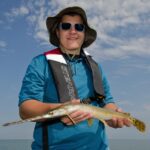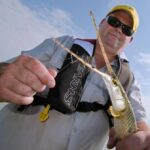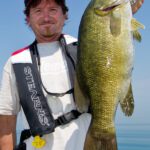Angelo and Pete find surprisingly great fishing-–-and countless species of fish—on the populated U.S. border waters of the St. Clair River.
Angelo and Pete visit the beach community of Mitchell’s Bay on Lake St. Clair, a border lake that lies a mere 10 km (6 miles) north of Downtown Detroit and Windsor. Surrounded by major urban centres, Lake St. Clair and the St. Clair River nonetheless feature some of the best fishing in Canada, whether it be for Smallmouth Bass, Largemouth Bass, Walleye, muskie, or Pike.
Often considered an unofficial “Great Lake”, St. Clair is part of a waterway that links Lakes Erie and Huron. And, like the Great Lakes of Southern Ontario, it features a mixed shoreline of concentrated development, farmland, and green spaces.
As a border lake, St. Clair presents some special restrictions regarding licences and international identifications, but more than makes up for that with its tremendous stock of sport fish. Despite its shallow and nearly featureless bottom, the lake consistently ranks as one of the best in Canada for Smallmouth—as well as other species.
MITCHELL’S BAY
Mitchell’s Bay is a sleepy, close-knit beach community known for its appreciation of nature and a slow, quiet way of life. It’s located right on the shores of Lake St. Clair in Southern Ontario.
Lake St. Clair is actually located farther south than a good number of American states, and, along with three of the Great Lakes, forms the border between Ontario and Michigan.
The Walpole Island Rod and Gun Club is a perfect place to stay for the angler travelling to St Clair. It’s situated smack dab on the edge of one of the many Largemouth loaded canals that run through this area. The boat launch is also just a short drive away.
TACKLING THE AREA
When fishing a river system like the St Clair River, one needs to remember that current can play a major role. This is not to say that all fishing areas are influenced by current—but the majority are. A ½ ounce Flipping Jig (black or green) or a 3/8 ounce Tungsten worm weight (Ang used this on a Yamamoto 10” worm) will help in the Largemouth water, while the same weights in a Tube Jig head and Drop Shot weights will deal well with the smallies.
THE FEEDING ZONE
The back channels are perfect for two anglers to pitch for largies. In the narrow areas, each angler can take a side, covering water fast. In the wider sections, both can work the same side, making sure not to pitch or flip to the area that buddy just hit. You can fish fast here as these Largemouth are waiting for something to drop into their feeding zone.
When we moved to the fast deep breaklines on the main river channel, we stuck mostly with the Drop Shot Senkos, but every now and then tried a 3.5” green tube. Use the current to your advantage and correct boat position with your trolling motor if you have one.
As an aside, this shoot took place during the hottest part of the summer. There were scorching temperatures of probably close to 100 degrees Fahrenheit. It was killer on us, but the fish still bit with aggression. If you’re fishing these conditions, make sure you bring and drink lots of water.
DUCK DINNER… AND STILL FEEDING!
Angelo was beyond words when shooting this beautiful (and hot) episode of the Fish’n Canada Show.
“In my thirty-plus years of fishing, I’ve never experienced anything as remarkable as this,” says Angelo, looking back at the experience. “Of course we’ve had fish spit out smaller bait fish or other creatures, but never have I seen a duck ejected from the belly of a caught fish. And certainly not from a Smallmouth Bass!”
For more on the duck and other oddities off the shore of the St. Clair River, check out Angelo’s blog post.
SPECIAL THANKS
- Walpole Island Rod and Gun Club
- The Black Goose Grill (Wallaceburg)
- Wayne & Mike Minogue







